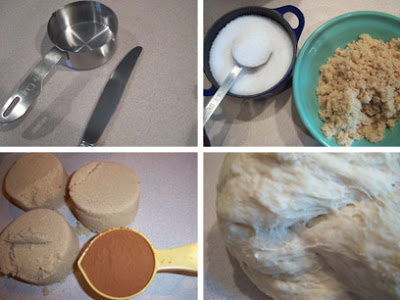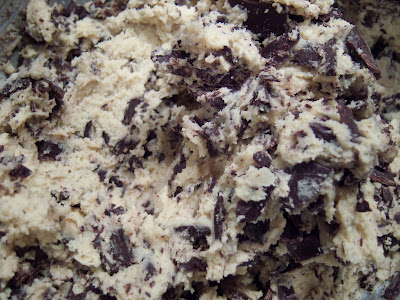Sunday morning. Well, really almost Sunday afternoon as I begin to write this. Regardless of the exact hour, it feels lazy. Which is exactly how I want my Sundays to feel. Even though the sun is shining and it is a perfect 60 degrees outside, and I have a large bag of potting soil and several envelopes of arugula and lettuce seeds just begging to be planted, I feel the urge to bake. And not only that: I feel the urge to bake something that will take hours to complete. Because it's Sunday. Sunday gives you the time to engage in such noble pursuits. Sunday bequeaths the hours necessary to make cinnamon rolls.
Weekends were made for cinnamon. Weekdays are to harried, too unpleasant for cinnamon. On those days, just getting out of the house in some semblance of order is a major win. One cannot linger over the intoxicating aroma of cinnamon when the trash needs to be taken to the curb and the dog needs to go out again and the travel mug must be filled with coffee to provide the caffeine fortification needed to face the office. I dream of a day when I can linger over cinnamon on a random Tuesday, which is to say I dream of a day when I can free myself from my day job, but until then it's a hard-boiled egg or cereal and soy milk at my desk. No wafting cinnamon; no yeasty, homemade buns.
Except on Sundays. (And, of course, the occasional Saturday. Except that Saturday always seems to be robbed of its cinnamon potential by the nagging need to go to the post office, pick up the dry cleaning, etc., etc.) Sundays just beg to have their multitude of care-free hours filled with rising bread. So it is that my weekend domestic self seeks this recipe: "Truck-stop cinnamon rolls," from Home Baking: The Artful Mix of Flour and Traditions from Around the World, by Jeffrey Alford and Naomi Duguid. (With such a glorious title, you know this book has to be good.)
These are not your average cinnamon rolls. They are gigantic. I mean, massive. They are bready -- more so than the average sweet confection. The cinnamon really takes center stage in these beauties, as the rolls are not masked in a cloyingly sweet glaze or icing. (Not that there's anything wrong with cloyingly sweet glazes or icing; on the contrary, such toppings are magnificent on the right roll. However, this roll wishes to stand on its own cinnamon-y feet.) They really are more like small loaves of cinnamon bread than they are "rolls." But if you are accustomed to excess, as I am, their size and heft will thrill you.
If you want to eat these cinnamon rolls first thing in the morning, you will have to do a little work the night before, and then get up very early to prepare them for the second and third rises. Personally, I feel that working into the night and then denying myself the happy little sleep-in that Sunday allows negates the lazy, slow context that makes these cinnamon rolls taste so good. I start making them whenever I wish and if they're not ready until 4:00 in the afternoon, what does it matter? It's still Sunday. The homey, soul-pleasing scent of cinnamon is still washing over the kitchen, punctuated here and there by fragrant waves of yeast. The cinnamon rolls marry just as well to a tall glass of milk as they do to a steaming cup of coffee. If it gets late enough in the day, I'll just eat one while sitting on the front porch with a beer. I have no qualms. Cinnamon rolls are best enjoyed at any time, day or night.
When Jerry Seinfeld righteously advocated for the Lesser Babka, in truth he was defending the honor of all baked goods lucky enough to include cinnamon: "I beg your pardon? Cinnamon takes a back seat to no babka. People love cinnamon. It should be on tables at restaurants along with salt and pepper. Anytime anyone says, 'Oh, this is so good. What's in it?' The answer invariably comes back, 'Cinnamon.' 'Cinnamon.' Again and again. Lesser babka? I think not."
++++++
TRUCK-STOP CINNAMON ROLLS
Adapted from Home Baking, by Jeffrey Alford and Naomi Duguid
I love this recipe for many reasons, one of which is the fact that an electric mixer is not needed. All this recipe calls for is a big bowl or two, a good old-fashioned wooden spoon and the best kitchen tools around: the baker's hands.
For the dough:
1 T. dried yeast
5 c. warm water
1/2 c. light or dark brown sugar
2 T. kosher salt
6 c. all-purpose flour, preferably unbleached
About 7 c. bread flour, preferably unbleached
For the filling:
1/4 c. vegetable oil
1 3/4 c. light brown sugar
1/4 c. ground cinnamon
Using a whisk, dissolve the yeast in the water in a large bowl. Stir in 6 c. all-purpose flour with a wooden spoon, incorporating the mixture until it's relatively smooth (there will be some lumps). Let the sponge rest for 2 hours, covered with plastic wrap and then draped with a kitchen towel.
After 2 hours, the sponge will be lively and will have grown. It actually bubbles right before your very eyes, which gives the clear indication that the yeast is alive.
Gently stir the sponge, then sprinkle on the brown sugar and kosher salt and stir in. Add about 6 c. bread flour, one cup at a time, stirring and turning as a dough begins to form. When the dough becomes too difficult to turn with a spoon (usually after the first 5 cups of flour have been added), turn it out onto a well-floured work surface. Knead for 8-10 minutes, incorporating more bread flour as needed, until the dough is smooth and elastic.
(When you first turn the flour out of the bowl onto the work surface, you might curse to yourself at what a mess you've made. You will wonder if the dough will ever come together, if you will ever be able to reclaim your hands from the dough-covered clubs that they've become. Be patient. The dough will come together, like magic. [It helps to have a second set of hands close by, to add more flour as you knead.])
Place the dough in a large lightly-oiled bowl. Cover the bowl with plastic wrap and let the dough rise until doubled in volume, 1 1/2 to 2 hours.
Pull the dough away from the sides of the bowl and transfer to the work surface. Flatten it into a square approximately 24 inches across. Pour on the oil and rub it around to completely cover the surface of the dough. Sprinkle on the brown sugar and then the cinnamon.
Roll up the dough into a jelly-roll shape, then cut into 12 rounds. (If you want the finished rolls to be smaller, cut the dough into 18 rounds.) I find a bench scraper works well to aid in the rolling process; use it to release the dough from the work surface as you roll. A serrated knife is the best tool for the cutting -- cut gently but firmly and the dough should give fairly easily.
Lightly grease a large baking sheet, or line a sheet with a Silpat. Lay the cinnamon rolls on the baking sheet. If you lost any filling in the cutting process, be sure to sprinkle it back over the rolls on the baking sheet. You never want to leave any sugar or cinnamon behind! Cover with plastic wrap and let rise for 30 minutes.
Meanwhile, place a rack in the middle of the oven and preheat the oven to 400 degrees Fahrenheit. Bake the rolls for 30 minutes, until they are a beautiful brown color. Do keep an eye on them throughout the baking; if they start to get too brown, cover with aluminum foil to prevent burning and over-baking. This is crucial: not only will the sugar on an over-baked cinnamon roll turn into an unpleasant, bitter crust, the bread itself will be tough. I usually cover the rolls after the first 15-20 minutes of baking.
Using a spatula to "cut" between and separate the rolls, lift them off the sheet and transfer to a rack to cool. To soften the crusty tops, cover loosely with a cotton cloth after 10 minutes.
Makes 12 or 18 rolls, depending on the size you desire. Note that these cinnamon rolls are delicious the next day, too. Just give them a quick spin in the microwave for 30 seconds and they will be soft and warm and sugarlicious.
















































